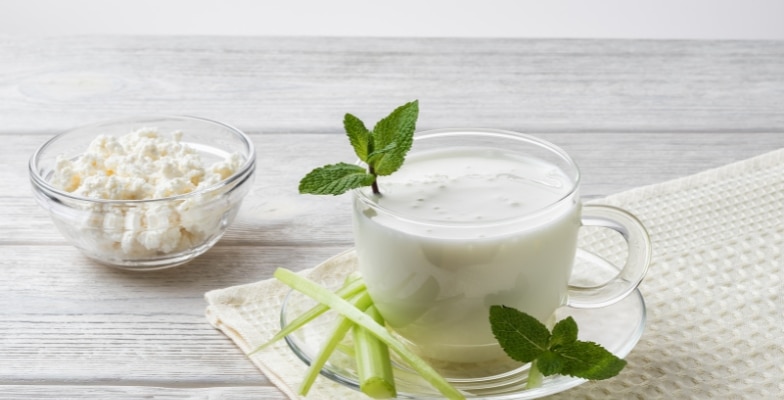Oranges | Nutrition And Health Benefits Of Oranges
- Introduction
- Oranges And Vitamin C
- Can Oranges Help With Weight Loss?
- Varieties Of Oranges
- Orange Nutrition
- Precautions

We can all be more like an orange, like fruits, they’re the juiciest. As a color, it’s the brightest. And eating them makes people happy.
The best way to get all of the vitamins, minerals, and nutrients is to add all five color groups to our plate each day. These colors are dark green, red, yellow, purple, and orange to reduce health risks, as encouraged by the American Heart Association and American Cancer Society.
Introduction
Oranges fit the criteria. They’re orange-colored fruits, widely and readily available, affordable, and easy to store. They can be eaten whole, juiced, as marmalades, or by adding their zested peels to cakes and desserts for the tangy flavor.
Orange is one of several species of small trees of the genus Citrus of the family Rutaceae. Their fruits are usually two to three inches in diameter and contain pulpy, juicy flesh underneath a thick, textured skin.
Likely native to Southeast Asia, oranges are now commercially grown. Besides providing fresh fruits, commercially grown oranges are processed to produce fruit juice, dried peels, and essential oils. The taste of oranges can vary from juicy to sweet to bitter, depending on the variety.
Oranges And Vitamin C
Vitamin C is a water-soluble vitamin, so the body does not store it. To maintain the required vitamin C levels, one needs a daily supply of vitamin C from the diet. The FDA’s recommended daily value (DV) of vitamin C for adults is 90 mg.
All types of medium-sized oranges provide about 70 mg of vitamin C or around 78% percent of DV. 1https://ods.od.nih.gov/factsheets/VitaminC-HealthProfessional/#:~:text=The%20DV%20for%20vitamin%20C,years%20and%20old One cup of peeled oranges can provide 121 mg of vitamin C, which is more than the DV and almost like a daily shot of this essential vitamin. All one has to do is buy the fruit, peel it, and eat it.
And do not throw away the peel, as just one tablespoon (6 g) of orange peel provides 14% of the daily required amount of vitamin C, about three times more than the inner fruit, along with four times more fiber. 2https://fdc.nal.usda.gov/fdc-app.html#/food-details/169103/nutrients, 3https://fdc.nal.usda.gov/fdc-app.html#/food-details/169919/nutrients
The Vitamin C In Oranges Helps The Body In Many Ways
-Protects cells of the body from damage
-It enables the body to make collagen, a protein that heals wounds and smooths the skin
-Makes it easier to absorb iron to beat anemia
-Elevates the immune system and helps the body fight cancer
-Decelerates the advance of age-related macular degeneration (AMD), a leading cause of vision loss
-Lowers levels of the stress hormone cortisol and blood pressure 4https://ods.od.nih.gov/factsheets/VitaminC-Consumer/, 5 https://www.ncbi.nlm.nih.gov/pmc/articles/PMC2533031/ , 6 https://fruitsandveggies.org/fruits-and-veggies/orange/, 7https://pubmed.ncbi.nlm.nih.gov/2507689/
Can Oranges Help With Weight Loss?
Oranges are high in fiber and have a low glycemic index and glycemic load. They are low-calorie fruits packed with vitamin C and have a higher water content than other fruits. 8https://www.ncbi.nlm.nih.gov/pmc/articles/PMC4578962/
The fiber in oranges can help with bowel movement and keeps us full longer. A healthy gut and easy bowel movements are crucial to weight loss. 9https://www.ncbi.nlm.nih.gov/pmc/articles/PMC6315720/, 10https://pubmed.ncbi.nlm.nih.gov/31174214/
Oranges have a low glycemic index (GI) of 43 and a glycemic load of 5. Oranges take a longer time to digest and absorb than other foods, which can help avoid weight gain. 11https://pubmed.ncbi.nlm.nih.gov/30460737/, 12https://www.cambridge.org/core/journals/british-journal-of-nutrition/article/beneficial-effects-of-a-5week-lowglycaemic-index-regimen-on-weigh
Related Article: What Is Glycemic Index | Food List With Glycemic Index
In a recent study, researchers at the University of Western Ontario and Warwick Medical School suggested that nobiletin and hesperidin extracts from oranges might help reverse obesity and reduce cardiovascular disease risk. 13https://www.ncbi.nlm.nih.gov/pmc/articles/PMC6121922/, 14https://www.sciencedaily.com/releases/2016/05/160511210619.htm Weight control is also vital for reducing the risk of developing diabetes and many other health conditions.
Varieties Of Oranges
We can find many kinds of oranges in the grocery store- sweet, tart, and bitter. A few commercially available oranges are.
-Bitter oranges
-Common oranges
-Blood oranges
-Navel oranges
-Mandarins
-Acidless oranges
Some consumers confuse oranges, mandarins, and tangerines, so let’s clear up the confusion.
Oranges Vs. Mandarins
Oranges
Oranges and mandarins are two different sizes of fruits from the Rutaceae family and Citrus genus. They have a lot in common. However, mandarins differ from other oranges.
Most oranges have thick skin, a round shape, and a tart flavor. Interestingly, oranges are hybrids of two fruits: pomelos and mandarins.
There are two types of oranges: sweet and bitter. They are grown in tropical and subtropical climates. Other oranges contain twice as much vitamin C as mandarins and are richer in vitamins B1, B2, and B5.
Mandarins
Mandarins are generally smaller and sweeter than other oranges, a little flatter in shape, and have significantly thinner, looser skin that makes them easier to peel.
They have been cultivated in China for the last 3000 years with 200 varieties and hybrids of mandarins worldwide, including tangerines and clementines.
Mandarin oranges contain more fats and carbs, sugars in particular, and are naturally higher in calories than other oranges. Mandarins have a higher concentration of vitamins A, E, B3, and B6 than other oranges.
Oranges Vs. Tangerines
People often use mandarin, tangerine, and clementine interchangeably for any of the small, orange-colored citrus fruits available in grocery stores. However, tangerines and clementines are two different types of mandarin oranges. The main difference between tangerines and other oranges is the size of the fruit and the peel.
Tangerines
Tangerines are bright orange, with slightly tougher skin than other oranges. Their flavor is a bit sweet and a little tarter than most oranges. Like all oranges, tangerines are members of the citrus family, but they are the C. tangerina species of fruit.
Tangerines were first grown in Palatka, Florida, but in the 1800s, they received the name tangerine when imported from Tangier in Morocco.
Tangerines contain more vitamin A than other oranges but are higher in calories and have less vitamin C and fiber. Like all oranges, they are rich in vitamins and minerals, including thiamin, folate, and potassium.
Other Oranges
Oranges may differ in size and shape depending on the variety; however, the fruits we typically call oranges to grow larger than tangerines. Larger oranges are mostly yellow-orange, except for the blood orange, which has a dark red color. Overall, oranges have similar nutrient profiles.
The most marked difference between the nutritional content of tangerines and other oranges is that others have almost double the amount of vitamin C.
Orange Nutrition
Oranges are a good source of fiber, vitamins A, B, and C, calcium, and potassium. They also contain a range of phytonutrients, such as carotenoids and flavonoids, which appear to have health benefits. 15https://www.mdpi.com/2077-0472/3/1/170/htm Health-protective nutrients are found in oranges, orange juice, and orange peel. 16https://link.springer.com/article/10.1007/s13596-012-0093-z
Antioxidants
Flavonoid antioxidants in oranges provide anti-inflammatory, antiviral, and antimicrobial benefits. Carotenoid antioxidants offer color to the oranges, positively affect the immune system, promote bone formation, promote eye health, and lower cancer risk. 17https://onlinelibrary.wiley.com/doi/abs/10.1002/mnfr.200800566 https://pubmed.ncbi.nlm.nih.gov/23417730/, 18 https://applications.emro.who.int/imemrf/Pak_J_Pharm_Sci/Pak_J_Pharm_Sci_2016_29_3_843_852.pdf , 19 https://pubmed.ncbi.nlm.nih.gov/30962863/
A study published in the American Journal of Clinical Nutrition suggests a higher flavonoid intake is linked with lower depression risk, particularly among older women. 20https://www.ncbi.nlm.nih.gov/pmc/articles/PMC5749298/ A higher flavonoid intake can prevent weight gain and reduce body fat. 21https://www.ncbi.nlm.nih.gov/pmc/articles/PMC7353347/
Fiber
A medium orange weighing 131 g contributes 3.14 g of fiber, nearly 10% of an adult’s daily fiber requirement. Several studies show that fiber can keep the gut healthy, reduce heart disease risk, and keep ulcers at bay. 22https://pubmed.ncbi.nlm.nih.gov/19335713/, 23https://www.ncbi.nlm.nih.gov/pmc/articles/PMC4743227/
Fiber also slows the way the body absorbs sugar, which can help control blood sugar levels, even for diabetic patients. 24https://www.ncbi.nlm.nih.gov/pmc/articles/PMC6712222/, 25https://www.niddk.nih.gov/health-information/diabetes/overview/diet-eating-physical-activity#when
Related Article: What Is Fiber? Health Benefits, Food Sources And Daily Requirements
Calcium
Oranges are high in this nutrient, vital to keeping the bones, organs, and muscles healthy. 26https://ods.od.nih.gov/factsheets/Calcium-HealthProfessional/#h3
Folate
Oranges are a great source of natural folate or vitamin B9; essentially, our body uses them to divide cells and make DNA. The folate in oranges may help prevent neurodevelopmental disorders and Autism spectrum disorders (ASD) in children. 27https://ods.od.nih.gov/factsheets/Folate-HealthProfessional/#h7, 28https://www.mdpi.com/2077-0472/3/1/170/htm
Blood Pressure
Oranges have no sodium, and they are a good source of potassium, making them beneficial in lowering blood pressure. A cup of orange juice can boost daily potassium intake by 14% and reduce high blood pressure and stroke risk. 29https://www.ncbi.nlm.nih.gov/pmc/articles/PMC4690266/, 30https://pubmed.ncbi.nlm.nih.gov/21371638/
Citric Acid And Citrates
All citrus juices contain citrate, a negatively charged form of citric acid that gives a sour taste to citrus fruits, and they can help prevent the formation of kidney stones. 31https://www.ncbi.nlm.nih.gov/pmc/articles/PMC4265710/
Precautions
Anything in excess, even if it’s good for the body, can be harmful. For example, oranges are acidic, which can worsen GERD symptoms (gastroesophageal reflux disease). In addition, patients on beta-blockers may need to avoid eating oranges or orange juice in excess, as too much potassium can lead to kidney damage.
As far as orange juice is concerned, one might get some extra sugar and lose a bit of fiber in the trade-off. On the other hand, too much fruit juice can lead to weight gain, raising your heart disease risk, especially in older age. But oranges, including their peel and juice, are generally suitable and beneficial for our body’s health.
What do you think about the article? Have any questions? Let me know in the comments below!

Skill-Based Education.
Global Recognition.
Powerful Community Building
Secure a certificate of completion in as little as a day by graduating from one of our free courses.
Get Access to Our Free Courses. No Credit Card Required.

Fabulous Body Membership
Your All-Access Pass to A Fabulous Body & A Rewarding Career
25+ Certificate Courses & Programs, All Included
15 Day Free Trial, 100% Money-Back Guarantee
About Kamini Thakar
Kamini is a very skilled writer/content creator. As a part of Fabulous Body for years, she has authored many articles really proving her prowess in acquiring and presenting knowledge about various health & nutrition topics.










